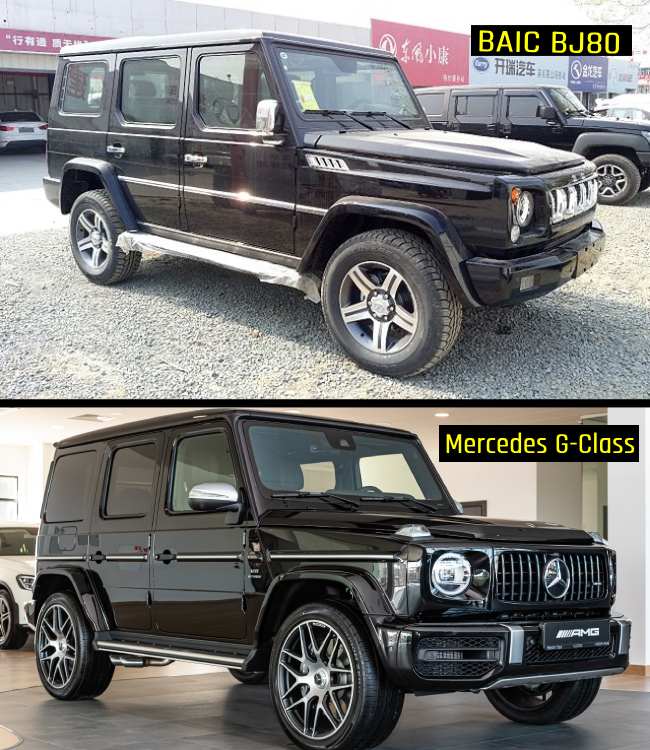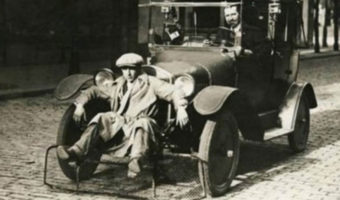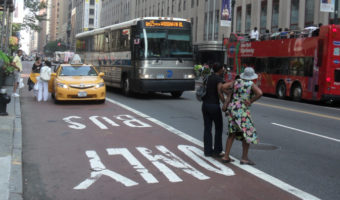How Is China Able to Sell Copycat Cars?
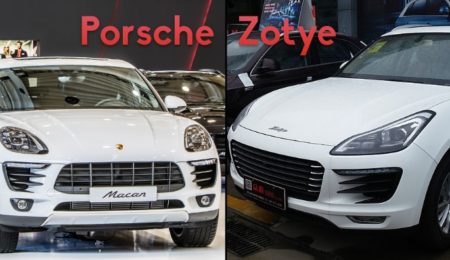
If you are a relatively wealthy person in China, you can own a luxury car like a Rolls Royce or a Ferrari. It’s not a real one, European-made, but a copycat car that looks like the original. Whichever corner of the world we might be in, there is no escape from at least one, if not multiple, products with the label “Made in China ” in our everyday lives.
China, also called the “World’s Factory,” is not just the biggest manufacturer in the world but also notoriously famous for producing knockoff versions of a large number of Western products with ridiculously similar names! Deats headphones (a play on “Beats”), Michaelsoft Binbows (heard of “Microsoft Windows”?), Mike (rhyming with “Nike”), and the list goes on. But it doesn’t just stop at consumer goods.
China also manufactures a huge number of copycat cars that look and feel almost identical to their original designs. From copies of Rolls Royce, BMW, Mercedes, Porsche, and Mini Coopers to Ford Ecosport, Hummer, and Toyota Yaris, the market for these Chinese copycat cars is immense!
This brings us to an extremely valid question. Is it even legal? Let us dig deeper into this story.
Table of Contents
When was the start of the flourishing copycat car industry in China?
It all started in the 1990s when the car market began to grow at a acrapid rate in China. The country started large-scale production of cars as more and more domestic car companies like Futon, Cherry, and Geely were founded alongside the already existing ones like SAIC, BAIC, or Dongfeng Motor.
When China joined the World Trade Organization at the beginning of the 2000s, the economy boomed even further. There was a huge demand for anything coming from the West. China began to replicate items from the West, starting with computers, fast food, and fashion, and even created look-alike Western cities. Alongside this, the car manufacturers also began the era of copycat cars.
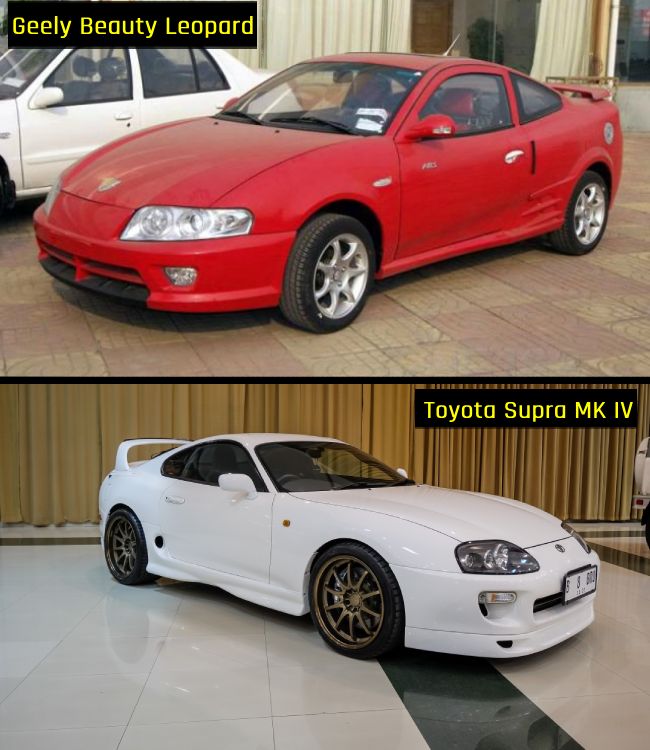
All these cars have one thing in common: they look like other cars that have, originally, already been designed and manufactured in Western countries. Jaguar, Benz, Toyota, BMW, Ferrari, Mini-Cooper, Lexus – any brand you can think of – China has a version of it.
Although quite impressively replicated in designs, the quality and engine power of the copycat cars are usually significantly low. But the buyers love the fact that they can afford and own a car that looks as luxurious as a Rolls Royce or a Ferrari.
Most of the original luxury Western cars are expensive and come with a huge import tariff. But the Chinese knockoff cars cost a fraction of the originals. The copycat car industry soon started to grow at a rapid rate.
Flattery or Stealing? Here are a few examples of copycat cars.
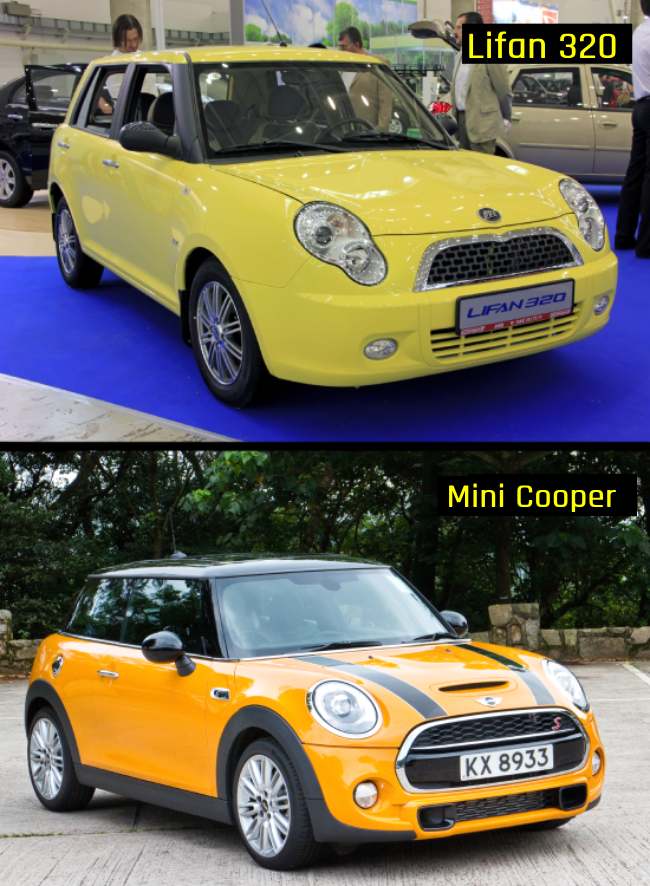
A few Chinese copycat cars are a little outrageous in their resemblance to the originals. While we know imitation is a form of flattery, sometimes the blatant replication raises a lot of eyebrows, resulting in lawsuits against Chinese manufacturers.
The Rolls Royce Phantom is a dream car that very few can afford. But if you are not brand-conscious and content with a look-alike, the Geely GE is the ideal car for you. The Lifan 320 is a copy of the Mini Cooper and looks almost like the original Mini. It is also exported to countries like Peru and Russia, where it is known as Smiley. In 2014, the Lifan 320 with no airbags or ABS (Antilock Braking System) failed poorly in a crash test conducted by Latin NCAP and ended up with a 0 out of 5 rating. They labeled it as one of the least safe cars.
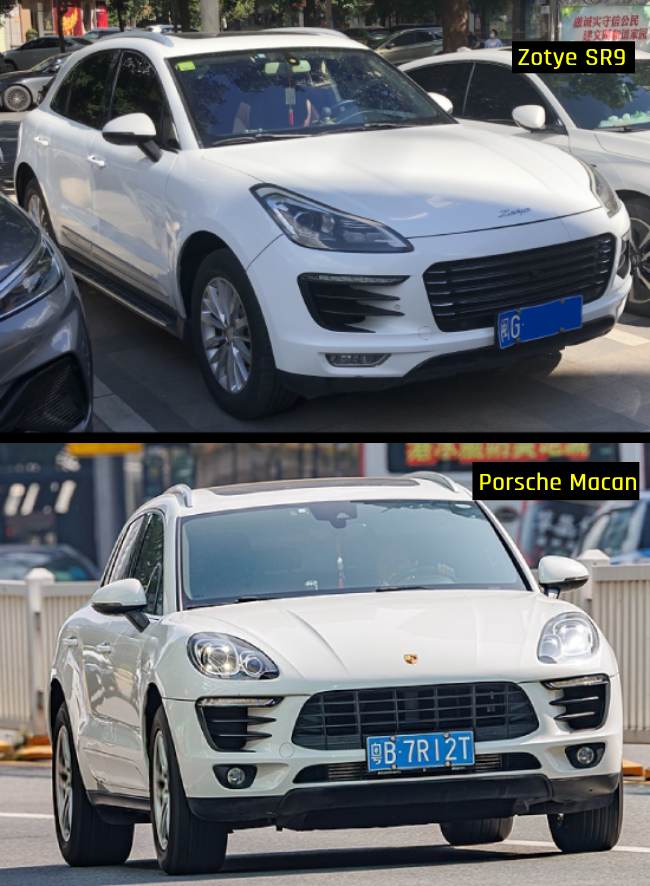
The Zotye SR9 is influenced by the Porsche Macan. The body shape, as well as the interiors, resembles the Macan. The shape of the spoiler on top of the rear window, the rear hatch, bumpers, and fog lights look the same. Even the shape and size of the third window match the Macan. The position of the license plate, the fuel cap, the shape of the lights, and the roof grilles are among a few differences!
Apart from these, a few other knockoff cars include the Suzhou Eagle Carrie, which looks like the Ferrari V12 Berlinetta from the front, and a Porsche Cayman everywhere else. The Shuanghuan Small Noble is inspired by Daimler’s Smart Fortwo, and the BYD M6 looks like a Toyota Previa. The China Anhui Jianghuai Automobile Co Ltd’s Ruifeng A6 was definitely made with the luxury car Audi A6 in mind, and they even seem to not be bothered with a similar name.
How does China legally get away with its copycat car market?
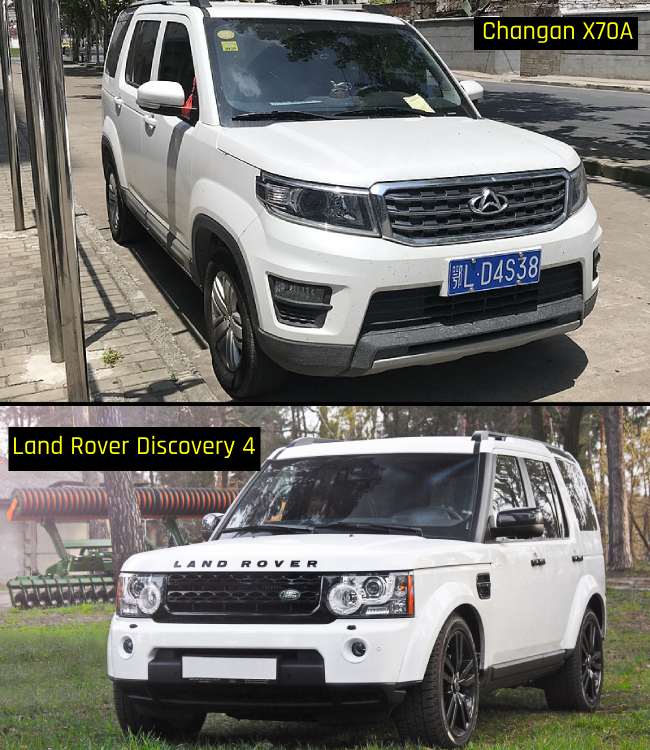
China has very relaxed laws regarding intellectual and design copyrights. With cars, it is always a challenge to prove a design is unique when it is mostly a variation in curves or lines. This results in very few successful legal cases against Chinese manufacturers.
However, the exterior design of a car is protected under many legal schemes, like unfair competition, design patents, copyright infringement, etc. Usually, if companies lose under one scheme, they may win under another. This may finally be good news for the original manufacturers.
So, how does one protect their intellectual property (IP) rights? Protecting design rights is the most important aspect of an IP regarding cars. According to the law, it is entirely on the owner of the IP to enforce the rights, and if he doesn’t do so, then there is not much the law can do.
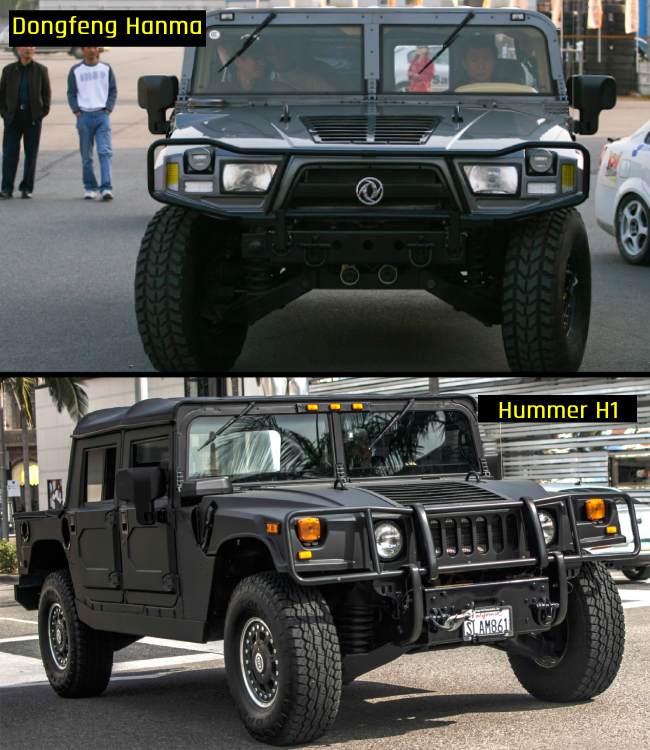
But the IP rights are always jurisdictional, and therefore, if a manufacturer has an IP right in the US or Europe, it doesn’t necessarily mean that China needs to abide by this, too. However, manufacturers with protection can seek export bans or damages for violations if proven.
Therefore, having a carefully curated IP strategy is crucial for safeguarding designs before showcasing them in public or inaugurating the designs in an auto show. Without this, car designs can be vulnerable not only to China but to all countries, leaving original designers with very limited legal options to prevent copying.
A lot of non-Chinese companies who had applied for Chinese design patents for automobile designs ended up getting millions of dollars in damages after they sued the Chinese companies for copying the car designs. However, foreign companies usually are reluctant to do so due to potential backlash and complex legal processes.
Range Rover won a legal case over a Chinese copycat car company.
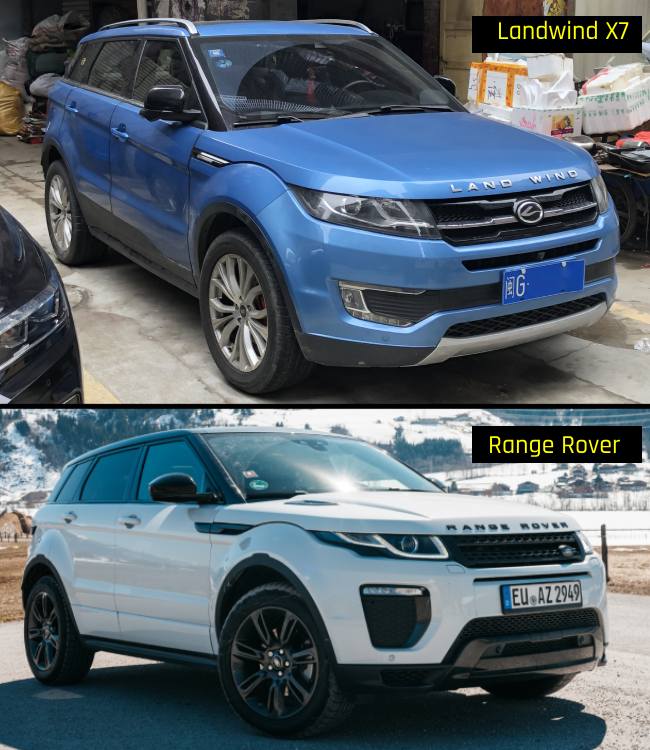
When Jiangling Motor Corporation in China launched their Landwind X7 sports utility vehicle, they raised a lot of eyebrows because of the uncanny resemblance to the Range Rover Evoque. The Landwind cost approximately £14,000 (around $17,500) compared to the £40,000 (around $50,000) Evoque.
In 2016, the UK-based carmaker sued Jiangling Motors on copyright issues and unfair competition. However, because of their prior disclosure of the design in a public exhibition that got a lot of media coverage, they lost the case under the copyright law. According to the court, a car’s exterior design may qualify for protection as an artistic work. However, in this particular case, the court ruled that Evoque’s exterior design did not meet the criteria for classification as an artistic work.
However, Land Rover did win the case against unfair competition law. The Beijing Chaoyang District Court ruled that Evoque’s latest model, launched in 2018, had five key features directly copied and pasted onto the Landwind X7. These similarities confused the customers. The court ordered Jiangling to cease production, sales, and marketing of the vehicle and even ordered them to pay compensation to Jaguar Land Rover.
Bruce Sunstein, the head of the Patent Practice Group of Bromberg & Sunstein LLP in Boston, says that intellectual property rights are sacred, but only to a certain degree. Manufacturers may sue companies, but their chances of winning are slim unless the two designs confuse customers into mistaking one for the other. In the case of the Range Rover, that is exactly what happened.
This win is historical because it signifies a potential beginning of correctly utilizing the law to protect consumers, as well as business investments in design and innovation.














